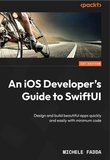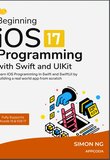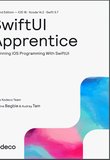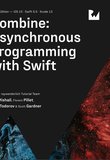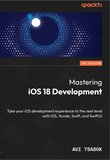-
.NET (.NET Core)
-
1C
-
APL
-
AWK
-
Agda
-
Agile/Scrum
-
Alef
-
Assembler
-
Basic
-
Beta Programming Language
-
Big Data/DataScience
-
C
-
C#
-
C++
-
CSS
-
Cobol
-
Crystal
-
D
-
Dart
-
DataBase (SQL)
-
Delphi
-
F#
-
Flutter
-
Fortran
-
GPT/AI/ИИ
-
GameDev
-
Git
-
Go (Golang)
-
HTML
-
Hacking and Security
-
Haskell
-
Java
-
JavaScript (JS)
-
Julia
-
Kotlin
-
Machine Learning (ML)
-
Natural language processing (NLP)
-
PHP
-
Pascal
-
Python
-
R
-
Ruby
-
Rust
-
Scratch
-
Swift
-
UML
-
UX/UI
-
Visual Basic
-
Wolfram
-
XML
-
АСУ
-
Проектирование/System Design
-
Сети/Network
-
Схемотехника/электронные схемы
-
.NET (.NET Core)
-
1C
-
APL
-
AWK
-
Agda
-
Agile/Scrum
-
Alef
-
Assembler
-
Basic
-
Beta Programming Language
-
Big Data/DataScience
-
C
-
C#
-
C++
-
CSS
-
Cobol
-
Crystal
-
D
-
Dart
-
DataBase (SQL)
-
Delphi
-
F#
-
Flutter
-
Fortran
-
GPT/AI/ИИ
-
GameDev
-
Git
-
Go (Golang)
-
HTML
-
Hacking and Security
-
Haskell
-
Java
-
JavaScript (JS)
-
Julia
-
Kotlin
-
Machine Learning (ML)
-
Natural language processing (NLP)
-
PHP
-
Pascal
-
Python
-
R
-
Ruby
-
Rust
-
Scratch
-
Swift
-
UML
-
UX/UI
-
Visual Basic
-
Wolfram
-
XML
-
АСУ
-
Проектирование/System Design
-
Сети/Network
-
Схемотехника/электронные схемы
Меню
RxSwift: Reactive Programming with Swift
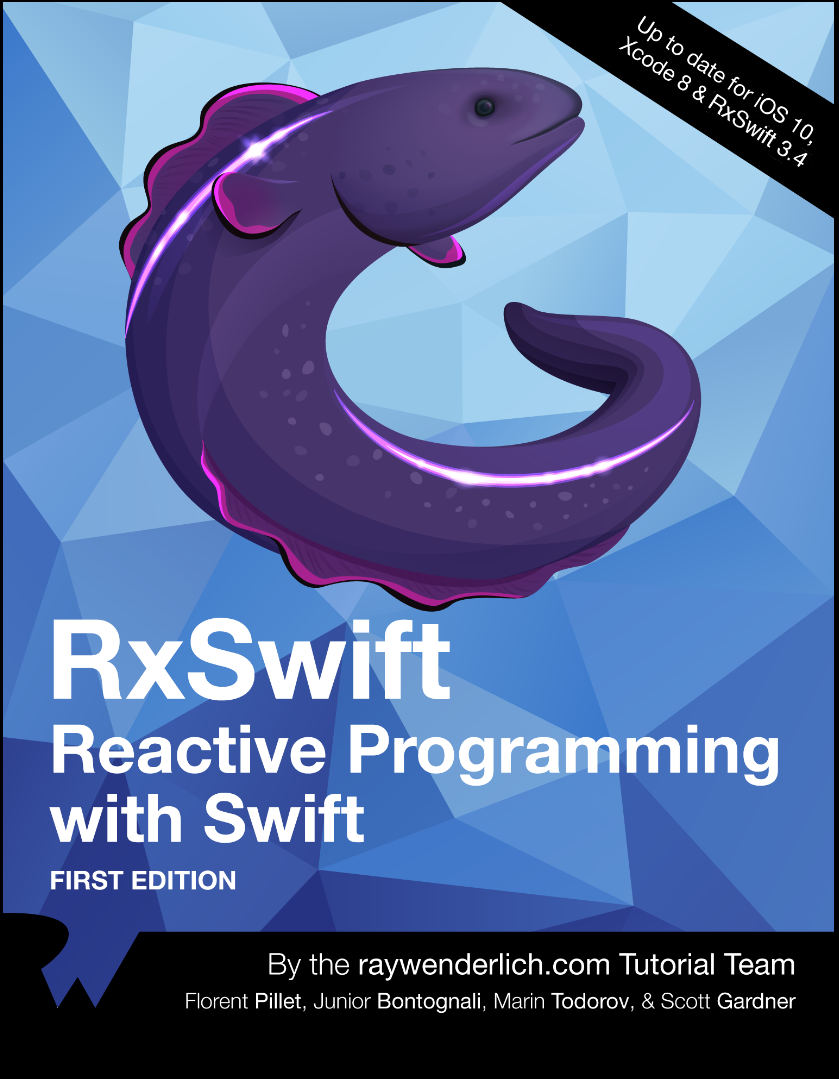
Автор: Bontognali Junior, Gardner Scott, Pillet Florent, Todorov Marin
Дата выхода: 2017
Издательство: Razeware LLC.
Количество страниц: 398
Размер файла: 4,0 МБ
Тип файла: PDF
Добавил: codelibs
Table of Contents : Extended
Introduction
What you need
Who this book is for
How to use this book
What’s in store
Book source code and forums
Book updates
License
About the cover
Section I: Getting Started with RxSwift
Chapter 1: Hello RxSwift!
Introduction to asynchronous programming
Foundation of RxSwift
App architecture
RxCocoa
Installing RxSwift
Community
Where to go from here?
Chapter 2: Observables
Getting started
What is an observable?
Lifecycle of an observable
Creating observables
Subscribing to observables
Disposing and terminating
Creating observable factories
Challenges
Chapter 3: Subjects
Getting started
What are subjects?
Working with PublishSubjects
Working with BehaviorSubjects
Working with ReplaySubjects
Working with Variables
Challenges
Chapter 4: Observables and Subjects in Practice
Getting started
Using a variable in a view controller
Talking to other view controllers via subjects
Which dispose bag to use?
Creating a custom observable
Challenges
Section II: Operators and Best Practices
Chapter 5: Filtering Operators
Getting started
Ignoring operators
Skipping operators
Taking operators
Distinct operators
Challenges
Chapter 6: Filtering Operators in Practice
Improving the Combinestagram project
Sharing subscriptions
Improving the photo selector
Trying out time based filter operators
Challenges
Chapter 7: Transforming Operators
Getting started
Transforming elements
Transforming inner observables
Challenges
Chapter 8: Transforming Operators in Practice
Getting started with GitFeed
Fetching data from the web
Transforming the response
Intermission: Handling erroneous input
Persisting objects to disk
Add a Last-Modified header to the request
Challenges
Chapter 9: Combining Operators
Getting started
Prefixing and concatenating
Merging
Combining elements
Triggers
Switches
Combining elements within a sequence
Challenges
Chapter 10: Combining Operators in Practice
Getting started
Preparing the web backend service
Categories view controller
Adding the event download service
Getting events for categories
Events view controller
Wiring the days selector
Splitting event downloads
Challenges
Chapter 11: Time Based Operators
Getting started
Buffering operators
Time-shifting operators
Timer operators
Challenges
Section III: iOS Apps with RxCocoa
Chapter 12: Beginning RxCocoa
Getting started
Using RxCocoa with basic UIKit controls
Binding observables
Improving the code with Traits
Disposing with RxCocoa
Where to go from here?
Challenges
Chapter 13: Intermediate RxCocoa
Getting started
Showing an activity while searching
Extending CCLocationManager to get the current position
How to extend a UIKit view
Conclusions about RxCocoa
Challenges
Section IV: Intermediate RxSwift/RxCocoa
Chapter 14: Error Handling in Practice
Getting started
Managing errors
Handle errors with catch
Catching errors
Retrying on error
Custom errors
Advanced error handling
Where to go from here?
Challenges
Chapter 15: Intro To Schedulers
What is a Scheduler?
Setting up the project
Switching schedulers
Pitfalls
Best practices and built-in schedulers
Where to go from here?
Chapter 16: Testing with RxTest
Getting started
Testing operators with RxTest
Testing RxSwift production code
Chapter 17: Creating Custom Reactive Extensions
Getting started
How to create extensions
Use custom wrappers
Testing custom wrappers
Common available wrappers
Where to go from here?
Challenges
Section V: RxSwift Community Cookbook
Chapter 18: Table and Collection Views
Basic table view
Multiple cell types
Providing additional functionality
RxDataSources
Chapter 19: Action
Creating an Action
Connecting buttons
Composing behavior
Passing work items to cells
Manual execution
Perfectly suited for MVVM
Chapter 20: RxGesture
Attaching gestures
Supported gestures
Advanced usage
Chapter 21: RxRealm
Auto-updating results
Arrays
Asynchronous first item
Changesets
Single objects
Adding objects
Deleting objects
Chapter 22: RxAlamofire
Basic requests
Request customization
Response validation
Downloading files
Upload tasks
Tracking progress
Section VI: Putting it All Together
Chapter 23: MVVM with RxSwift
Introducing MVVM
Getting started with Tweetie
Challenges
Chapter 24: Building a Complete RxSwift App
Introducing QuickTodo
Architecting the application
Bindable view controllers
Task model
Tasks service
Scenes
Coordinating scenes
Binding the tasks list with RxDataSources
Binding the Task cell
Editing tasks
Challenges
Conclusion
The popularity of reactive programming continues to grow on an ever-increasing number of platforms and languages. Rx lets developers easily and quickly build apps with code that can be understood by other Rx developers — even over different platforms.
Not only will you learn how to use the RxSwift port to create complex reactive applications on iOS, you’ll also see how to easily solve common application design issues by using RxSwift. Finally, you’ll discover how to exercise full control over the library and leverage the full power of reactive programming in your apps.
Who This Book Is For
This book is for iOS developers who already feel comfortable with iOS and Swift, and want to dive deep into development with RxSwift.
Topics Covered in RxSwift
- Getting Started: Get an introduction to the reactive programming paradigm, learn the terminology involved and see how to begin using RxSwift in your projects.
- Event Management: Learn how to handle asynchronous event sequences via two key concepts in Rx — Observables and Observers.
- Being Selective: See how to work with various events using concepts such as filtering, transforming, combining, and time operators.
- UI Development: RxSwift makes it easy to work with the UI of your apps using RxCocoa, which provides an integration of both UIKit and Cocoa.
- Intermediate Topics: Level up your RxSwift knowledge with chapters on reactive networking, multi-threading, and error handling.
- Advanced Topics: Round out your RxSwift education by learning about MVVM app architecture, scene-based navigation, and exposing data via services.
- And much, much more!
By the end of this book, you’ll have hands-on experience solving common issues in a reactive paradigm — and you’ll be well on your way to coming up with your own Rx patterns and solutions!

